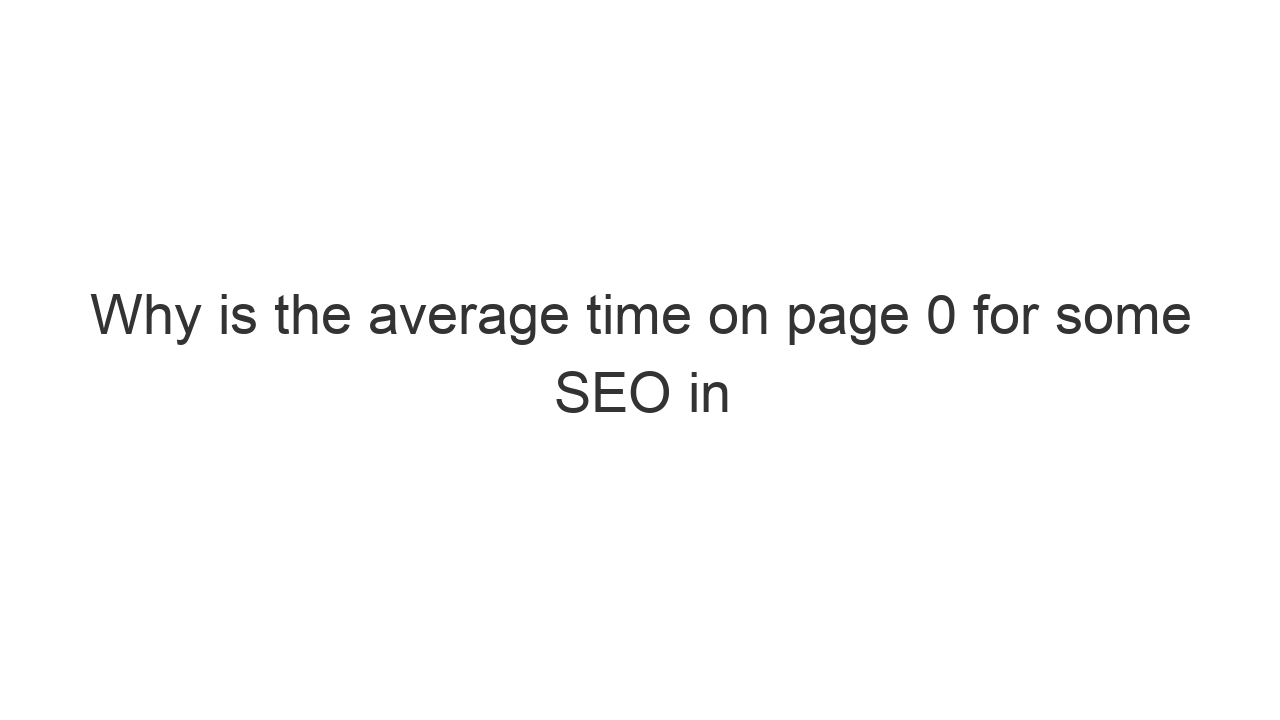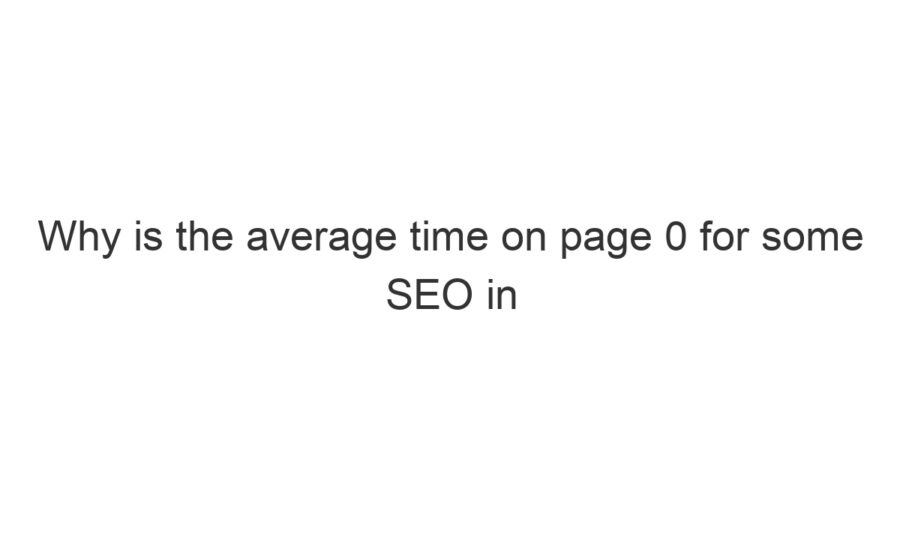Because of a flaw in the way time on page and time on site is measured, it means time on site can be 0.
Time on page measures the difference between when opens a webpage and then clicks another link. Or opens a new tab and visits the same domain. A common fallacy is that time on page represents all users, when it only captures those that complete those actions. So it is not reflective of an overall audience. It tends to skew up.
A measure of 0 means the selected dataset doesn’t have enough users, or no users have clicked on an additional link. It would be better to swap to a metric like Attention. Attention measures second be second how long a user engages and collects data on all users. This gives a more accurate view of what the customer is doing.

|
|---|
 Skip to content
Skip to content
